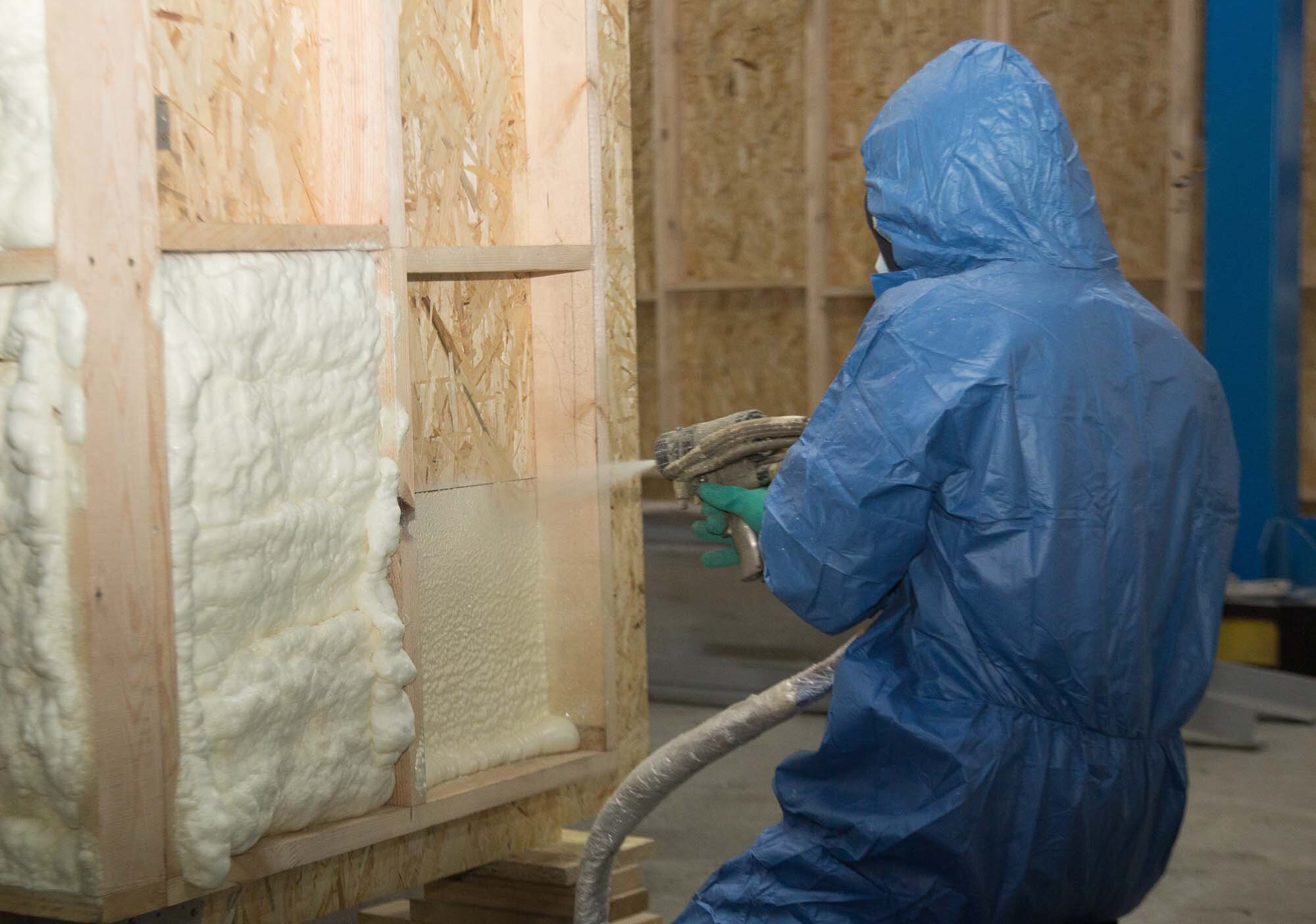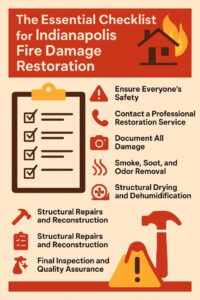Spray foam insulation creates an impermeable barrier that blocks moisture infiltration while eliminating condensation problems that damage building materials. The foam expands to seal every crack, gap, and penetration where water vapor enters, providing complete moisture control that traditional insulation materials cannot achieve.
Closed cell spray foam acts as both insulation and vapor barrier, preventing humid air from reaching cold surfaces where condensation forms. This dual function eliminates mold growth, wood rot, and structural damage while maintaining healthy indoor air quality. The foam’s moisture resistance properties last the building’s lifetime without degradation or maintenance requirements.
How Spray Foam Prevents Moisture Problems
Moisture enters homes through air leaks, vapor transmission, and direct water infiltration. Spray foam addresses all three pathways simultaneously by creating a continuous sealed envelope around the building structure. The material bonds directly to surfaces, eliminating gaps where humid air typically penetrates.
Closed cell foam has extremely low water absorption rates at less than 2% by volume. This resistance prevents the foam itself from becoming a moisture source while maintaining its insulating properties even in high-humidity environments. The foam’s chemical composition repels liquid water while blocking water vapor transmission.
Open cell foam provides excellent air sealing but allows some vapor transmission. While it doesn’t function as a complete vapor barrier, it significantly reduces moisture movement compared to traditional insulation materials. The choice between foam types depends on specific moisture control requirements and climate conditions.
Bonus Tip: Install spray foam before completing electrical and plumbing work to ensure complete sealing around penetrations that commonly allow moisture infiltration.
Moisture Control Performance Comparison
| Insulation Type | Water Absorption | Vapor Permeability | Air Sealing | Mold Resistance |
| Closed Cell Foam | <2% by volume | 0.8-3.2 perms | Excellent | Complete |
| Open Cell Foam | <1% by volume | 16+ perms | Excellent | High |
| Fiberglass Batts | 0.2-4% by weight | 2.0+ perms | Poor | Low |
| Cellulose | 5-20% by weight | 4.0+ perms | Fair | Moderate |
| Rigid Foam Board | 1-5% by volume | 1.0-5.0 perms | Good | High |
Technical Specifications for Moisture Protection
| Property | Closed Cell Foam | Open Cell Foam | Test Standard |
| Water absorption 24hr | 1.8% max | 0.2% max | ASTM D2842 |
| Vapor transmission | 1.5 perms @ 1″ | 16 perms @ 1″ | ASTM E96 |
| Capillary break | Complete | Complete | Visual inspection |
| Mold growth rating | 0 (no growth) | 0 (no growth) | ASTM G21 |
| Dimensional stability | <5% change | <10% change | ASTM D2126 |
| Service temperature | -100°F to 200°F | -100°F to 200°F | ASTM D1621 |
Problem Areas Where Moisture Infiltrates
Specific building areas require targeted moisture control strategies:
- Rim Joists: These areas represent the most common moisture entry point in residential construction. They connect foundation walls to floor systems, creating thermal bridges and air leak pathways. Spray foam completely seals these junctions while providing structural reinforcement.
- Attic Spaces: These areas face unique moisture challenges from both interior humidity and exterior weather exposure. Spray foam applied to roof decking eliminates condensation on cold surfaces while moving the building envelope to the roofline. This approach prevents ice dam formation and reduces cooling loads in summer months.
- Basement and Crawl Spaces: These applications require careful moisture management due to ground contact and hydrostatic pressure. Closed cell foam applied to foundation walls creates a continuous moisture barrier that prevents vapor transmission while adding insulation value. The foam’s adhesion strength helps resist hydrostatic pressure from exterior moisture sources.
Climate Zone Considerations
Different climate zones present varying moisture challenges that influence foam selection and application methods. Hot, humid climates require vapor barriers on the exterior side of wall assemblies to prevent inward vapor drive. Closed cell foam provides this barrier function while eliminating air conditioning system infiltration.
Cold climates face outward vapor drive from interior humidity during heating seasons. Spray foam prevents warm, moist air from reaching cold exterior surfaces where condensation occurs. The material maintains consistent performance across temperature extremes, unlike traditional insulation that loses effectiveness when wet.
Mixed climates experience seasonal vapor drive in both directions, requiring balanced moisture management approaches. Spray foam’s ability to function as both air barrier and vapor retarder provides flexibility for these variable conditions.
Bonus Tip: Consider climate zone requirements when selecting foam thickness, as vapor barrier properties activate at different depths depending on foam density and permeability ratings.
Health Benefits of Moisture Control
Effective moisture control through spray foam insulation prevents mold and mildew growth that triggers respiratory problems and allergic reactions. The EPA identifies moisture control as the primary strategy for maintaining healthy indoor environments, particularly important for families with asthma or immune system sensitivities.
Spray foam eliminates dust mite habitats by removing the high humidity conditions these allergens require for survival. Traditional insulation materials can harbor dust mites and other allergens, while spray foam’s sealed surface prevents accumulation of particulates and biological contaminants.
Market research indicates homes with moisture problems lose 10-25% of their value due to health concerns and structural damage. Professional moisture control through spray foam insulation protects both property values and occupant health over the building’s lifetime.

Things to Consider Before Making a Decision
Existing moisture problems require remediation before spray foam insulation. Address active leaks, foundation drainage issues, and ventilation deficiencies to prevent trapping moisture within building assemblies. Spray foam seals existing conditions in place, making pre-installation moisture assessment critical.
Building ventilation systems may require upgrades after installing spray foam. The material’s air sealing properties create tighter building envelopes that need mechanical ventilation to maintain indoor air quality. Factor ventilation system costs into total project budgets.
Local building codes may require specific vapor barrier configurations that influence foam selection. Some jurisdictions mandate vapor barriers on specific sides of wall assemblies, affecting whether closed cell or open cell foam meets code requirements. Verify code compliance before selecting foam types.
Professional installation ensures proper moisture management performance. DIY applications often result in gaps, thin spots, or incorrect thickness that compromise moisture control effectiveness. The investment in professional installation protects against moisture damage that costs thousands to repair.
Common Questions
How does spray foam compare to traditional vapor barriers? Spray foam provides superior moisture control by combining air sealing with vapor barrier properties in one application. Traditional plastic vapor barriers require separate installation and often develop tears or gaps that allow moisture penetration.
Can spray foam cause moisture problems if installed incorrectly? Improper installation can trap existing moisture or create unbalanced vapor drives. Professional contractors assess moisture conditions and select appropriate foam types to prevent these issues while ensuring optimal performance.
What maintenance does spray foam require for moisture control? Spray foam requires no ongoing maintenance for moisture control once properly installed. The material maintains its moisture resistance properties throughout the building’s lifetime without degradation or replacement needs.
Protect Your Home from Moisture with Spray Foam Insulation FAQ
How thick should spray foam be for effective moisture control? Closed cell foam requires 2 inches minimum thickness to function as a vapor barrier. Open cell foam needs 3-5 inches for optimal air sealing while providing some moisture resistance. Climate zone requirements may dictate greater thicknesses.
Will spray foam prevent all moisture problems in my home? Spray foam eliminates vapor transmission and air infiltration moisture sources but cannot address direct water leaks or foundation drainage problems. Comprehensive moisture control requires addressing all potential sources including gutters, grading, and mechanical systems.
How quickly does spray foam cure to provide moisture protection? Initial skin formation occurs within 20-45 seconds, providing immediate air sealing benefits. Full cure and maximum moisture resistance develop within 24-48 hours depending on temperature and humidity conditions during installation.
Can I install spray foam in areas with existing moisture damage? Existing moisture damage must be remediated and dried completely before foam installation. Spray foam seals conditions in place, so addressing underlying moisture sources and damage prevents future problems and ensures optimal performance.
Does spray foam work in all climates for moisture control? Spray foam provides effective moisture control in all climate zones when properly selected and installed. Climate conditions influence foam type selection and application methods, but the material performs consistently across temperature and humidity ranges.
Make the Right Decision
Spray foam insulation delivers comprehensive moisture protection through superior air sealing and vapor barrier properties that traditional materials cannot match. The investment protects both building structure and occupant health while maintaining consistent performance throughout the building’s lifetime.
Evaluate your specific moisture control needs by considering climate conditions, existing problems, and long-term protection goals. Consult with certified installers to assess your building’s requirements and develop effective moisture management strategies. Proper moisture control through spray foam insulation prevents costly damage while creating healthier, more comfortable living environments.
Author
With over 6 years of experience in the construction and insulation industry, Christian Wayne Purpera has developed a strong focus on energy efficiency and concrete repair. He founded Polyco alongside his father to provide reliable, high-quality solutions in both spray foam insulation and concrete lifting for residential and commercial clients. Christian specializes in spray foam insulation, concrete lifting and leveling, and helping property and business owners enhance energy performance and safety using modern, cost-effective techniques.
Reviewer
Alexander Davis, with 11 years in spray foam application, provided a review that helped us better address the concerns and goals of companies working in both residential and commercial projects.










